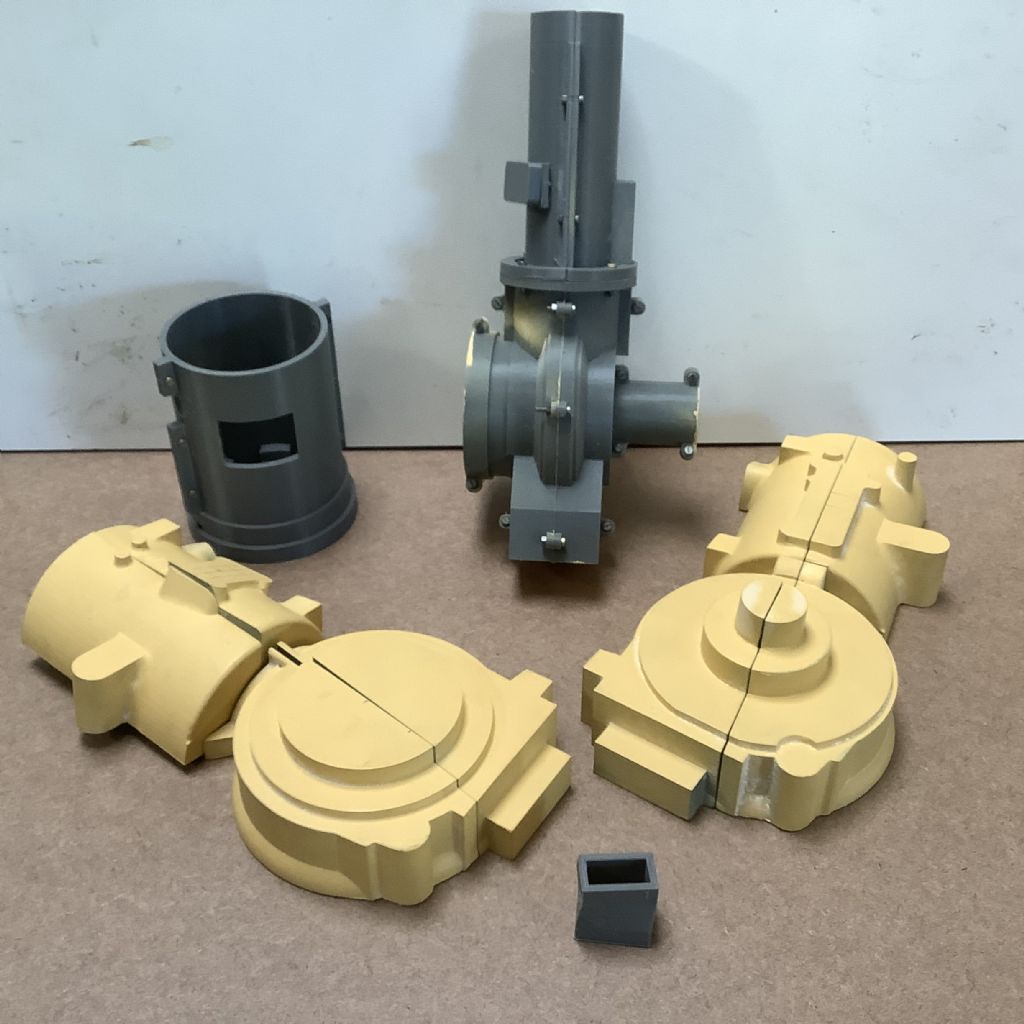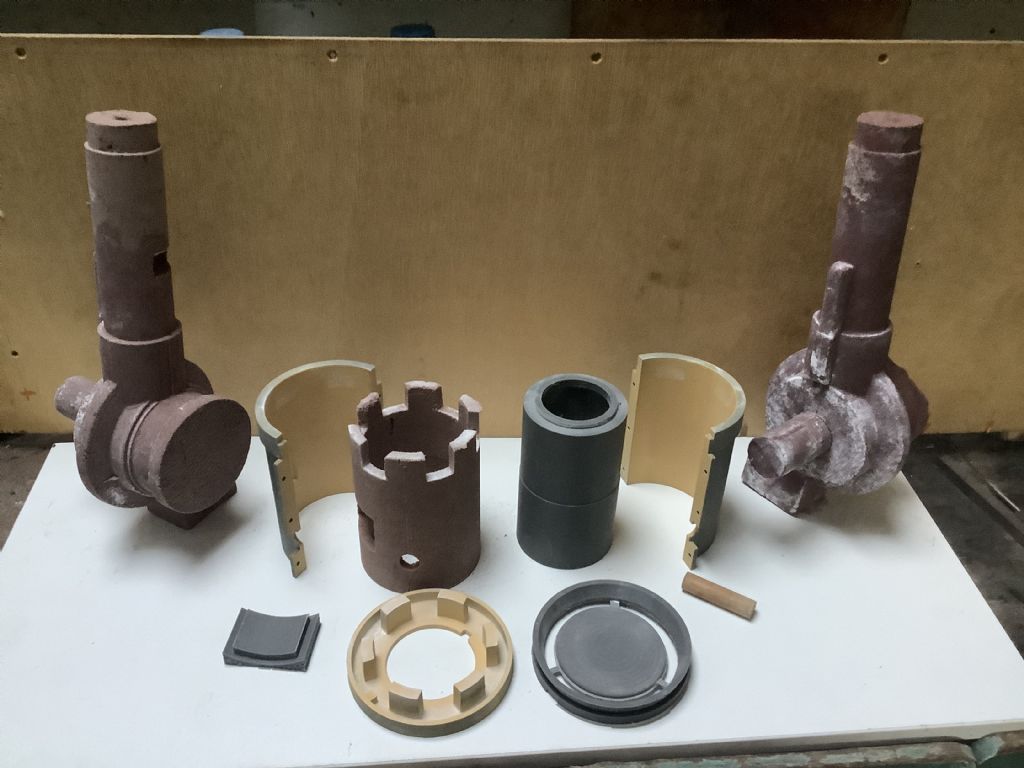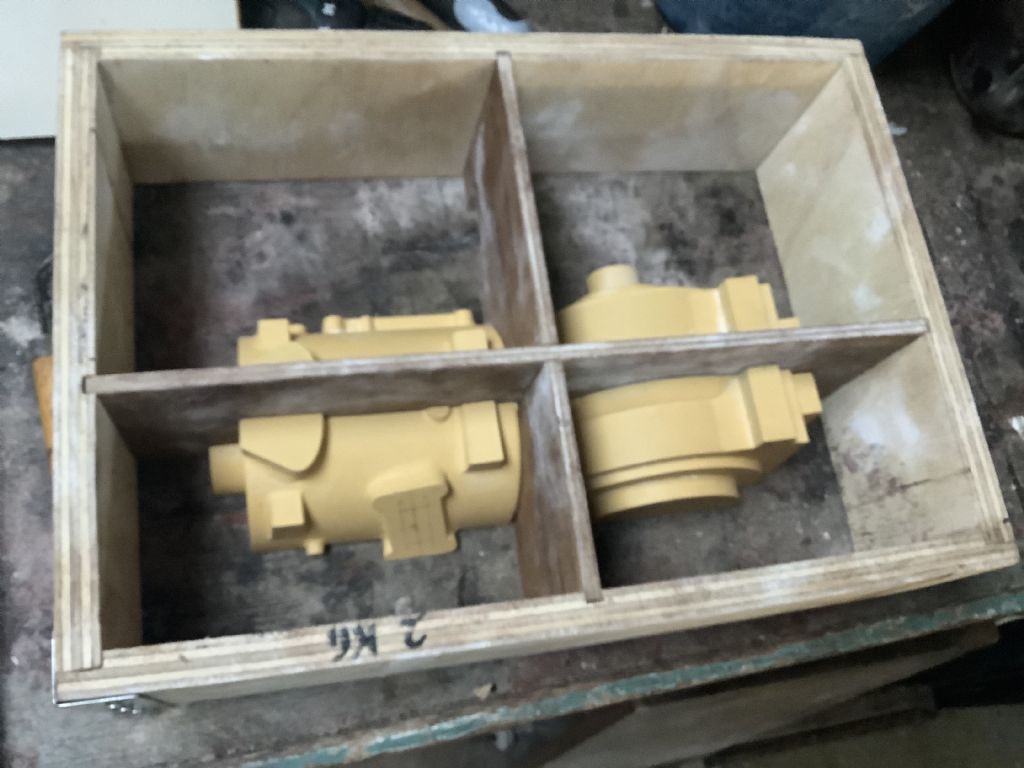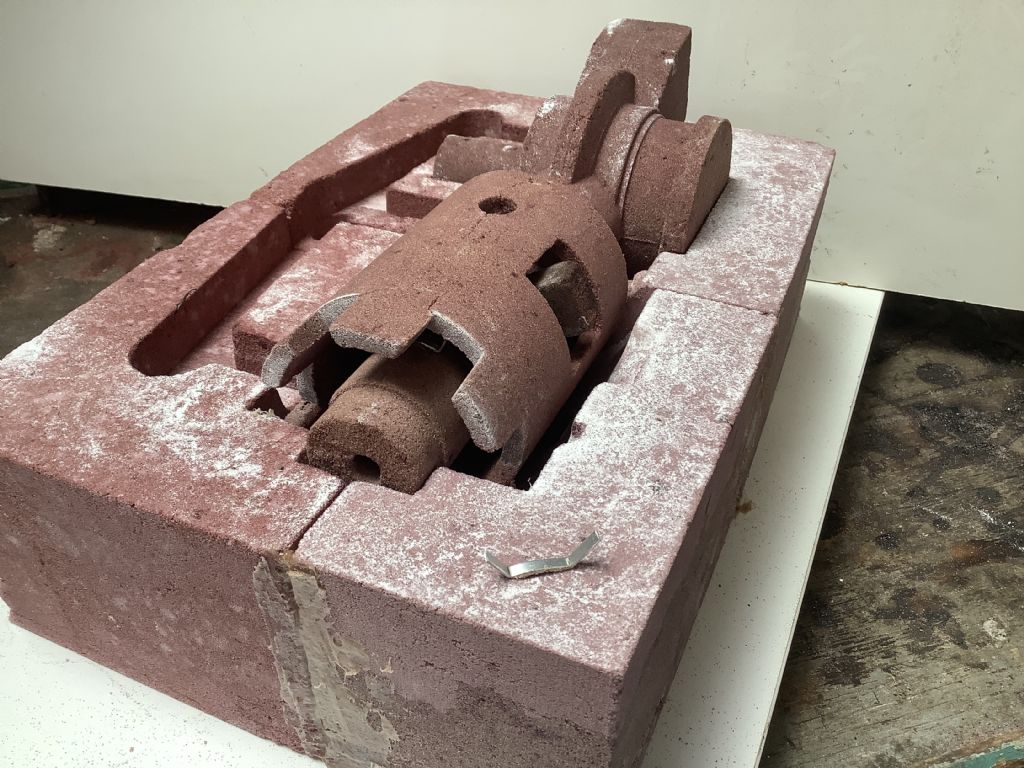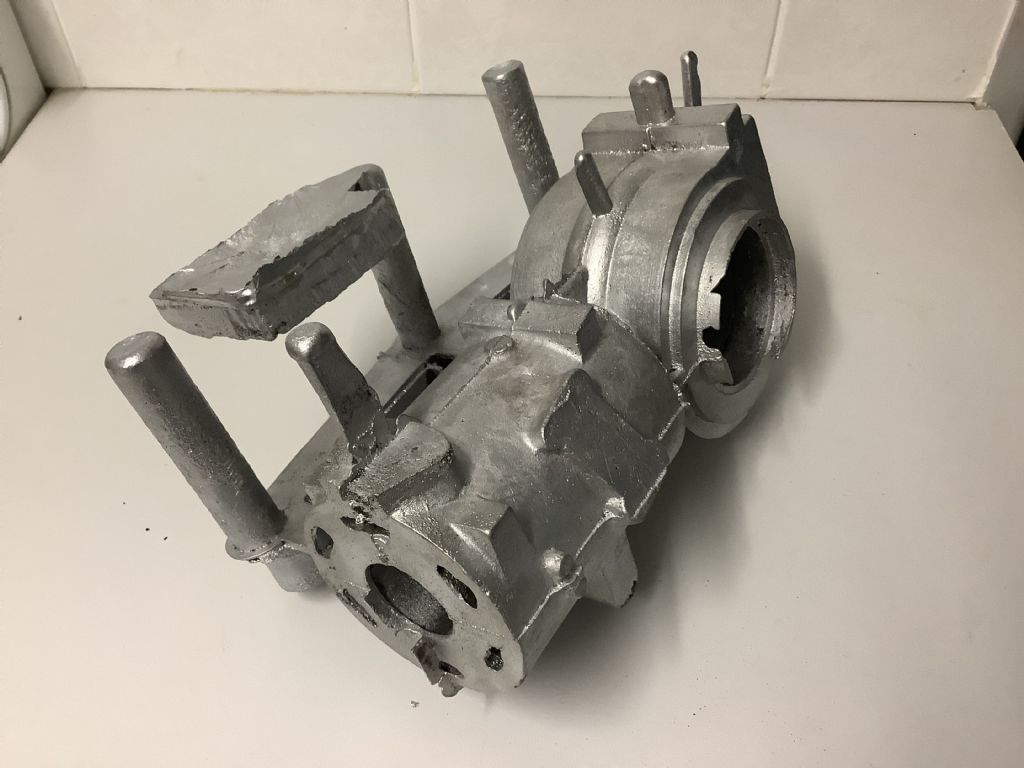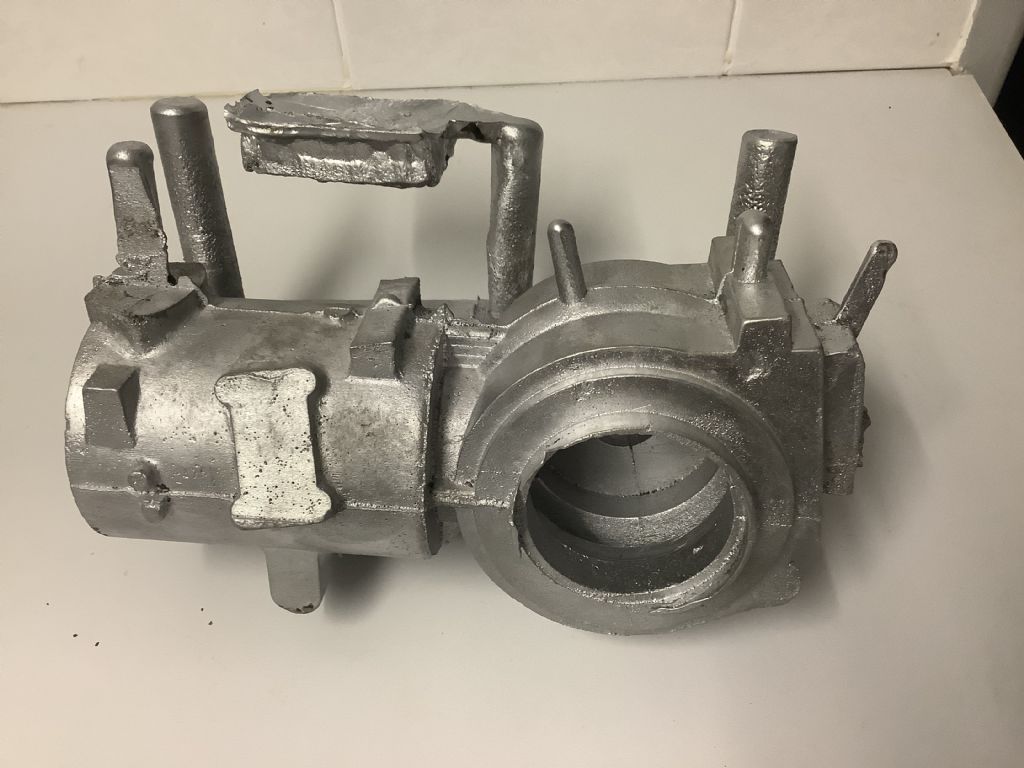7. Knife gates seem to work well for thin parts, since you can fill a large thin section very quickly.
I generally use generous V-shaped runners, often one on each side of the mold, with gates either side of the mold cavity. The runners have spin traps at their ends, to allow the metal to spin and rise up the trap, and out the top of the mold, before metal starts to enter the mold cavity through the gates.
The gates are always at the top of the runners, and as low in the mold cavity as possible to try and avoid the waterfall effect.
The metal velocity is controlled by the gates, not by the sprue or any chokes in the system.
Oversized runners allow the cooler metal and trash/entrained metal/air to flow to the spin trap, and then feed very hot clean metal to the mold cavity.
8. To solve your strobe screen problem, hit the "PrtScn" button on the keyboard, toggle over to your favorite photoshop program, hit Paste, and then crop off the unwanted screan area. This produces a perfect screen capture every time.
9. I acutally have found that casting gray iron is easier than casting aluminum, since gas absorption does not seem to be a problem with iron. I can get iron as hot as possible, and not have to worry about getting it too hot and degrading surface finish.
Iron requires a good clay-graphite crucible such as a Morgan Salamander-Super, and furnace refractory such as Mizzou, which holds up well to iron temperaturs.
I #10 full of iron takes about 1 hour to bring to pour temperature, and that requires about 2.5 gallons of diesel (some use waste oil; I don't).
10. Gray iron scrap does not have to be cleaned prior to melting it, in contrast to what many will tell you.
I have seen scrap with 1/4" of thick rust get melted and make the most beautiful castings you have ever seen.
Any paint, rust, etc. on iron scrap comes out in the slag. I had to see this to believe it, but it is true, and can easily be proven with a couple of test pours.
.
 Andy_G.
Andy_G.

